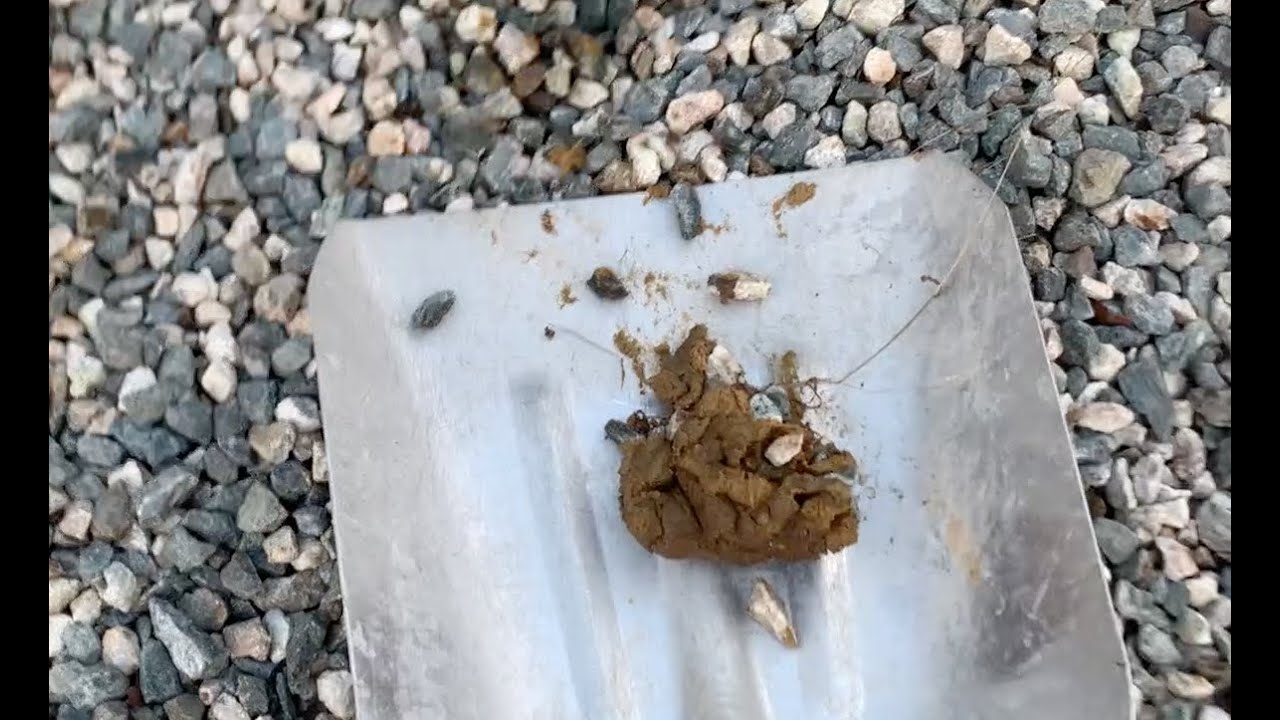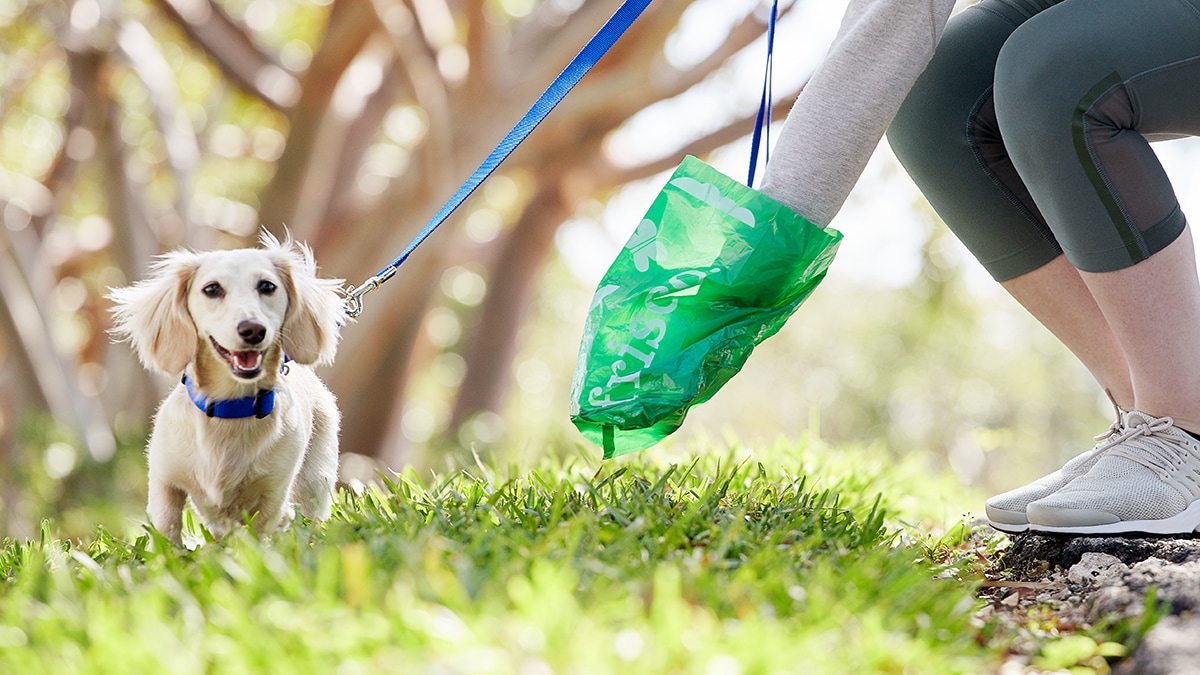As dog owners, it can be distressing to see our furry friends struggling with constipation or hard poop. Not only is it uncomfortable for them, but it can also lead to more severe health issues if not addressed. In this step-by-step guide, we’ll explore how to safely help your dog when they experience this problem, ensuring they remain comfortable and healthy. Let's dive into understanding why hard poop occurs and how to approach the situation with care.
Understanding Why Hard Poop Occurs

Hard poop in dogs is often a sign of underlying health issues or lifestyle factors. Understanding these factors is crucial for effective management. Here are some common reasons why your dog may be experiencing hard stool:
- Dehydration: Not drinking enough water can lead to dry, hard poop. Dogs need ample fresh water daily to keep their digestive system functioning properly.
- Diet: A lack of fiber-rich foods or a low-quality diet can contribute to constipation. Make sure your pet is on a balanced diet tailored to their age, breed, and size.
- Lack of Exercise: Just like humans, dogs need regular exercise to keep their intestines moving. A sedentary lifestyle can lead to sluggish bowel movements.
- Medical Conditions: Certain health issues, such as anal gland problems, gastrointestinal disorders, or even some medications, can cause hard poop. If this is a recurring issue, consult your vet.
- Stress or Anxiety: Changes in environment or routine can lead to stress, which may disrupt your dog's normal bowel habits.
Recognizing the root cause of hard poop is crucial in preventing future occurrences. By addressing these issues, you can help your dog maintain not only their bathroom habits but also their overall health and happiness. A visit to the veterinarian might be warranted if the problem persists, ensuring your pup gets the care they need.
3. Signs Your Dog May Need Help

As a loving dog owner, it's crucial to be aware of when your furry friend might be in trouble. Here are some signs that your dog may need assistance with hard poop:
- Straining or Whining: If you notice your dog straining or whining while trying to poop, it’s a clear signal that something isn't right. This discomfort can indicate that the stool is too hard to pass.
- Lethargy: A suddenly lethargic dog that usually has plenty of energy could be suffering from constipation. If your dog is less active than usual, it's time to pay attention.
- Loss of Appetite: If your dog is turning away from food and treats, it could be a sign of discomfort or pain. Coupled with difficulty in bowel movements, this could mean constipation.
- Bloating: Watch for any signs of bloating in your dog's belly. A distended abdomen can be a serious concern and may indicate that stool is stuck in the intestines.
- Unusual Behavior: Any change in behavior, such as hiding or avoiding interaction, can indicate that your pet is in distress. Dogs often exhibit different traits when they are unwell.
If you spot any of these signs, don’t hesitate to consult your veterinarian. Prompt action often prevents further complications!
4. Preparation for the Removal Process

Preparing for the removal of hard poop from your dog's anus is essential for both you and your pet's comfort. Here’s how to get ready:
- Gather Supplies: Before starting, gather the following items:
- Gloves
- Pet-safe lubricant (like petroleum jelly or water-based gel)
- Towels
- Dog waste bags
- A gentle, non-abrasive cleaning solution
- A soft brush or cloth (optional)
By preparing thoroughly, you create a safer and more effective environment for both you and your dog during this sensitive procedure. Remember, always prioritize patience and gentleness!
5. Step-by-Step Removal Instructions
Removing hard poop from your dog’s anus can be a bit daunting, but with the right approach, it can be done safely and effectively. Here’s a step-by-step guide to help you through the process.
- Gather Your Supplies: Before you begin, gather everything you’ll need:
- Gloves (preferably disposable)
- A warm, wet cloth or dog wipes
- A small pair of scissors (if needed)
- A trash bag for disposal
- Find a Comfortable Position: Position your dog comfortably on their side in a quiet area to minimize stress. You might want to have a helper hold your dog if they are particularly wiggly.
- Put On Gloves: Always protect your hands by putting on disposable gloves to maintain hygiene.
- Examine the Area: Gently part the fur around your dog’s anus to get a clear view. If the stool is visible and easily reachable, proceed.
- Use a Cloth or Wipe: Dampen the cloth or wipe and gently clean the area around the anus to soften the stool. This may help ease the removal process.
- Carefully Remove the Stool: If the stool is hard, you might need to break it apart gently with your fingers (while wearing gloves) or use the scissors to cut it into smaller pieces for easier removal.
- Dispose Properly: Place the removed stool in the trash bag and seal it tightly to prevent odors.
- Cleanup: Wipe the area with another clean, damp cloth, and remove your gloves. Wash your hands thoroughly afterward.
And there you go! With patience and care, you’ve successfully removed the hard poop from your dog’s anus.
6. Post-Removal Care and Tips
Once you’ve accomplished the task of removing your dog’s blockage, it’s crucial to provide them with the right care and preventative measures to avoid future issues. Here’s how you can ensure your furry friend stays comfortable and healthy.
- Monitor Your Dog: Keep an eye on your dog for any signs of distress or discomfort after the removal. Look for behaviors like whining, licking their backside excessively, or straining to defecate.
- Hydration is Key: Ensure your dog has access to fresh water at all times. Hydration can help soften their stools and prevent future hard poop issues.
- Diet Matters: Consider evaluating your dog’s diet. Adding fiber-rich foods like pumpkin or switching to high-quality dog food can aid in regular bowel movements. Always consult your veterinarian for specific dietary recommendations.
- Regular Exercise: Regular walks and play can stimulate your dog’s digestive system. Aim for at least 30 minutes of activity each day.
- Routine Anal Gland Checks: Sometimes, hard stools can result from impacted anal glands. Regular checks and expressing them if needed can help prevent issues.
- Visit the Vet: If your dog frequently has difficulty with bowel movements or shows signs of constipation, it’s essential to consult your veterinarian. They can assess and recommend appropriate treatments.
By taking these post-removal steps, you’ll not only help your dog recover well but also prevent future discomfort. Remember, a little attention goes a long way in keeping your furry friend happy and healthy!
7. When to Consult a Veterinarian
While it can be normal for dogs to experience constipation or hard poop occasionally, there are certain signs and symptoms that warrant a visit to the vet. It's essential to stay vigilant and know when it's time to seek professional help to ensure your furry friend stays healthy and happy. Here are some key indicators:
- Persistent Constipation: If your dog hasn't had a bowel movement in more than 48 hours, it's time to consult your vet.
- Straining or Pain: If your dog is visibly struggling or crying while trying to poop, they may be experiencing discomfort or pain that requires veterinary attention.
- Loss of Appetite: A disinterest in food can indicate an underlying issue, including that stubborn poop that just won’t budge.
- Vomiting: If your dog starts to vomit, especially if it's been happening alongside constipation, get them to a vet right away.
- Bloating or Swollen Belly: A swollen belly can indicate a more serious problem. This is another red flag that should send you straight to the vet.
- Blood in Stool: Seeing blood, whether it’s fresh or dark, is definitely concerning and requires immediate veterinary attention.
Remember, your vet can provide the best advice tailored to your dog’s specific needs. It’s better to err on the side of caution when it comes to your pet's health!
8. Conclusion
Removing hard poop from your dog's anus can seem like an unpleasant task, but with the right knowledge and tools, it can be done safely and effectively. Always approach the situation with care and empathy. Remember the importance of keeping things clean—not just for your pup’s sake, but for your own comfort, too!
In summary:
- Assess the situation calmly and gather your supplies.
- Use a gentle approach—remember, your dog is relying on you!
- Maintain cleanliness before and after the procedure.
- Monitor your dog’s health closely and be aware of any red flags.
Ultimately, a happy, healthy dog is what we all want. With a bit of patience and care, you can navigate this challenge effectively. If in doubt, don’t hesitate to reach out to your veterinarian for guidance. Your furry friend deserves the best, and being proactive about their health will pay off in the long run!
 admin
admin








